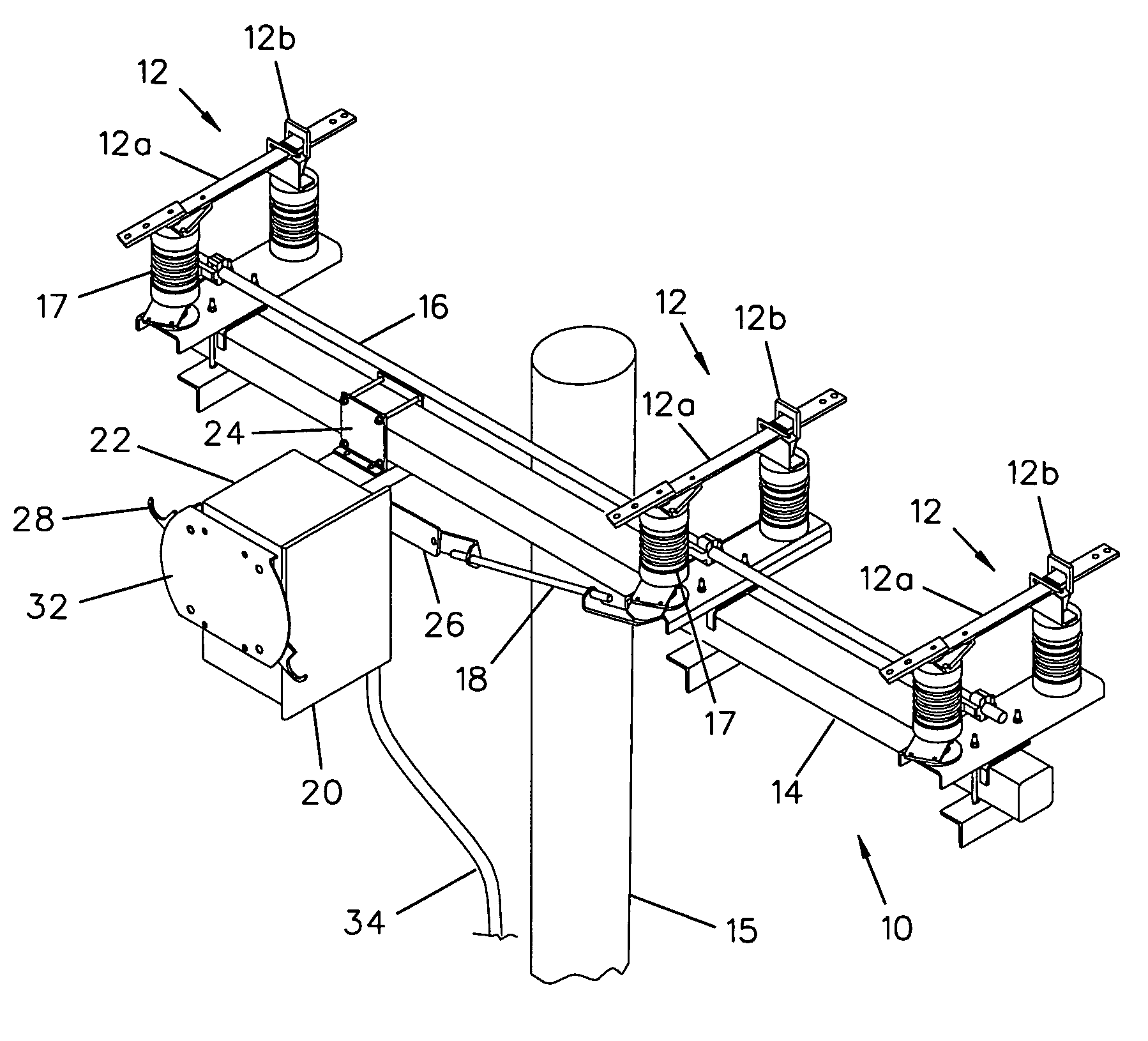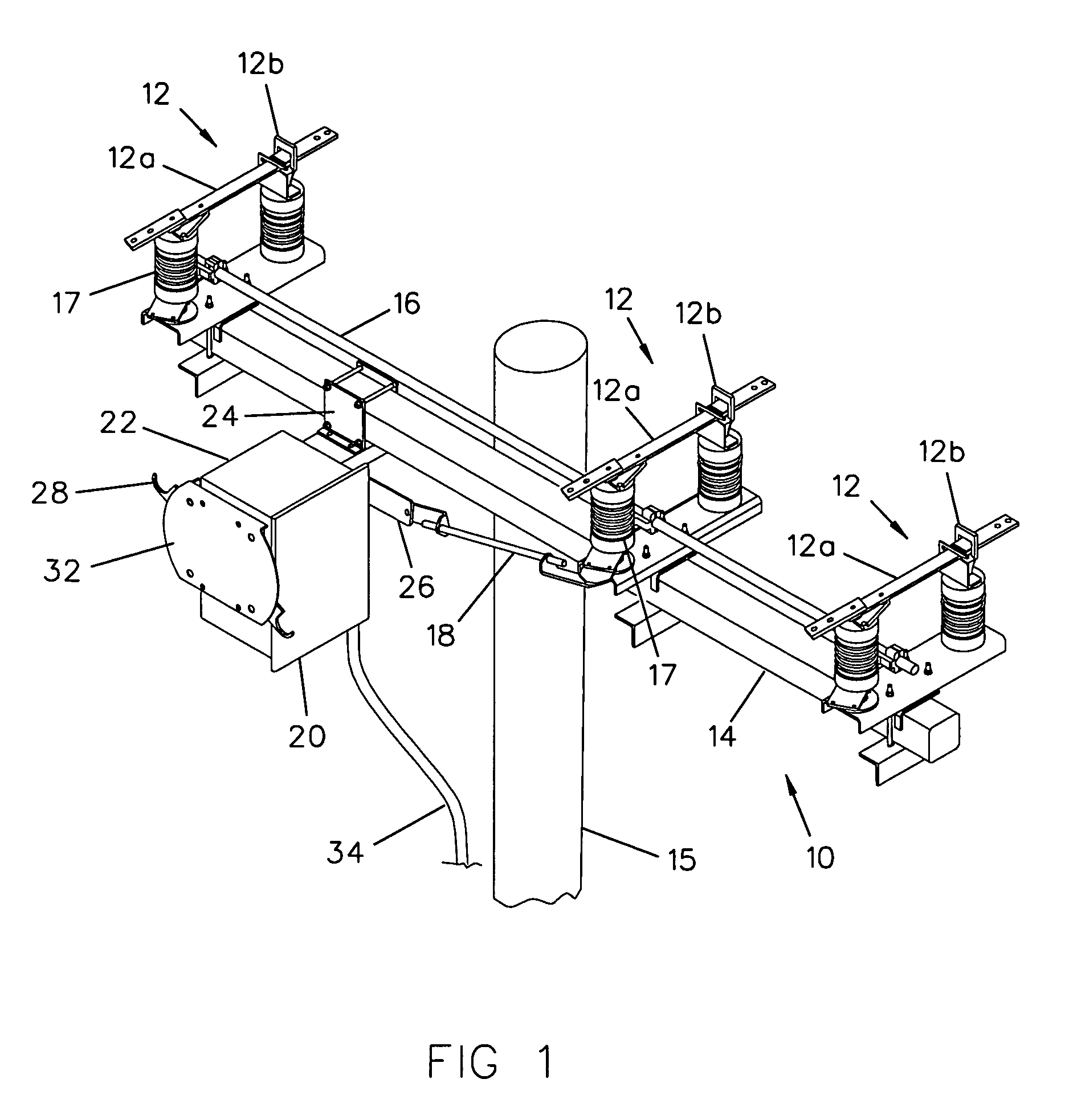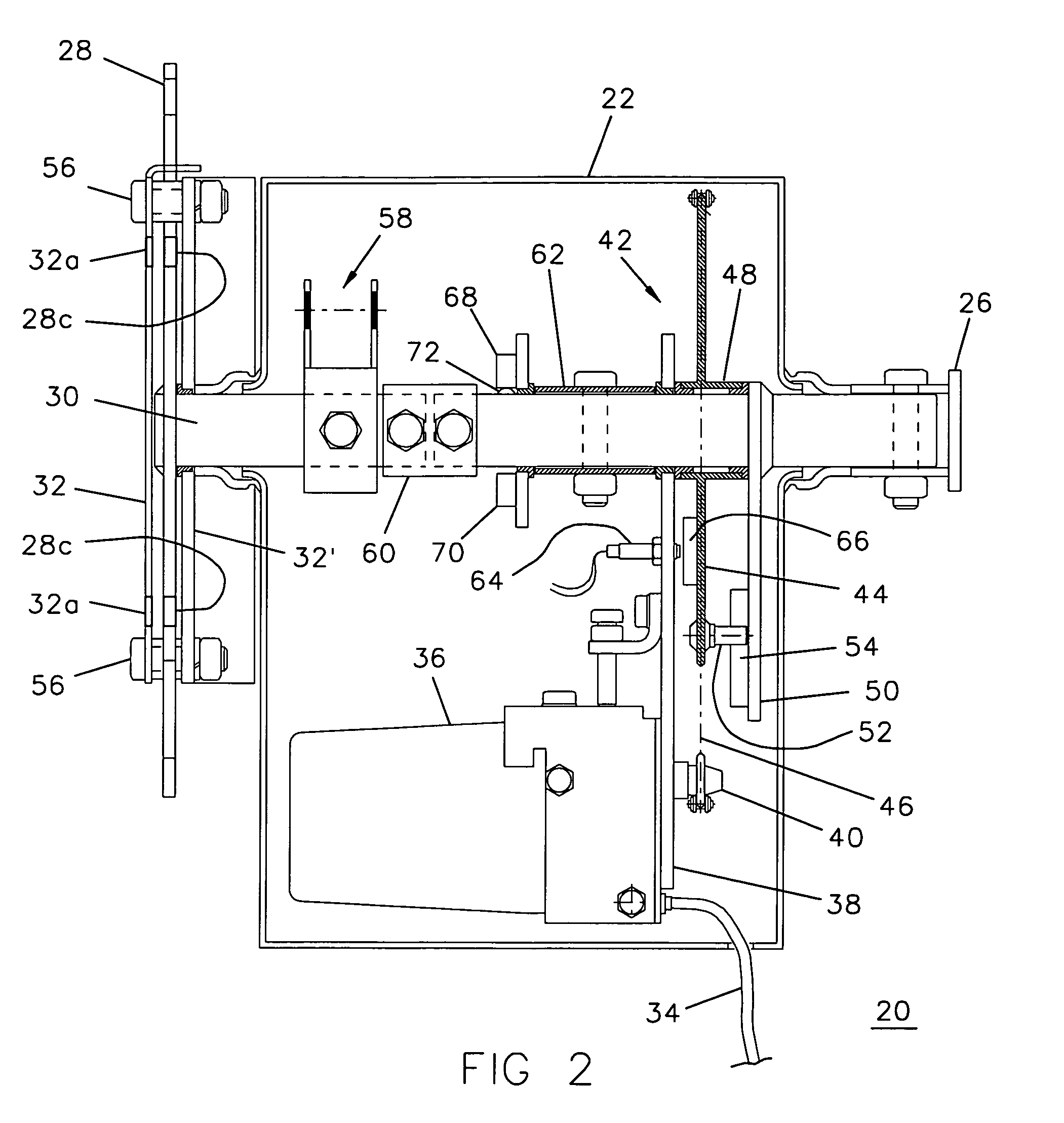Motor operator, with inherent decoupling characteristics, for electrical power switches
a technology of motor operators and electrical power switches, which is applied in the direction of switches, contact mechanisms, switches, etc., can solve the problems of accessing manual elements, expensive and troublesome, and achieve the effect of inherent decoupling of invention
- Summary
- Abstract
- Description
- Claims
- Application Information
AI Technical Summary
Benefits of technology
Problems solved by technology
Method used
Image
Examples
Embodiment Construction
[0028]FIG. 1 shows a typical pole-top installation of an electrical power switch 10 and a motor operator 20 in accordance with the invention. The illustrated switch 10 is a three-phase distribution switch with three switch poles 12 arranged for ganged operation on a cross-arm 14 on a utility pole 15. Each of the switch poles 12 includes a first switch contact 12a that is movable to a closed or open switch position in relation to a second switch contact 12b that is fixed. The three movable contacts 12a are each mechanically coupled to a switch operating rod 16 for operation together. The rod 16 is subject to linear movement effecting switch operation by rotation of one switch-pole movable insulator post 17 that has a mechanical linkage 18 to an output member of the motor operator 20. The illustrated switch 10 is sometimes referred to as a movable insulator type of switch because of the force transmitted through rotating insulators that support the movable contacts 12a. In the orienta...
PUM
 Login to View More
Login to View More Abstract
Description
Claims
Application Information
 Login to View More
Login to View More - R&D
- Intellectual Property
- Life Sciences
- Materials
- Tech Scout
- Unparalleled Data Quality
- Higher Quality Content
- 60% Fewer Hallucinations
Browse by: Latest US Patents, China's latest patents, Technical Efficacy Thesaurus, Application Domain, Technology Topic, Popular Technical Reports.
© 2025 PatSnap. All rights reserved.Legal|Privacy policy|Modern Slavery Act Transparency Statement|Sitemap|About US| Contact US: help@patsnap.com



